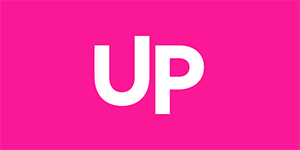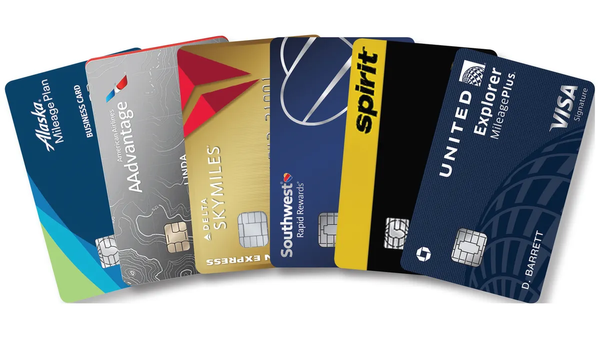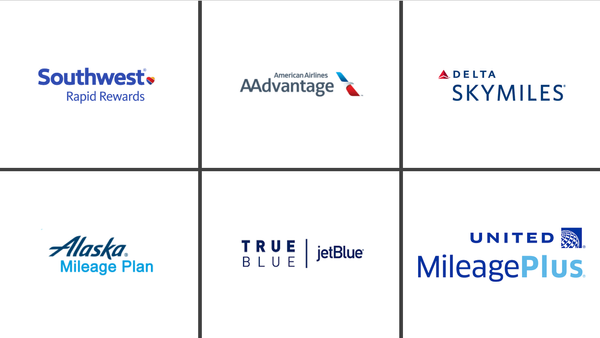Airline Elite Status: The Cult, The Myths, The Sucker’s Game • Day 1/5
Welcome aboard the elite status circus of April 2025. In the world of frequent flyers, airline elite status has become a quasi-religion – complete with its own rituals (mileage runs), status symbols (luggage tags and shiny cards), and a devout congregation chasing the next tier.
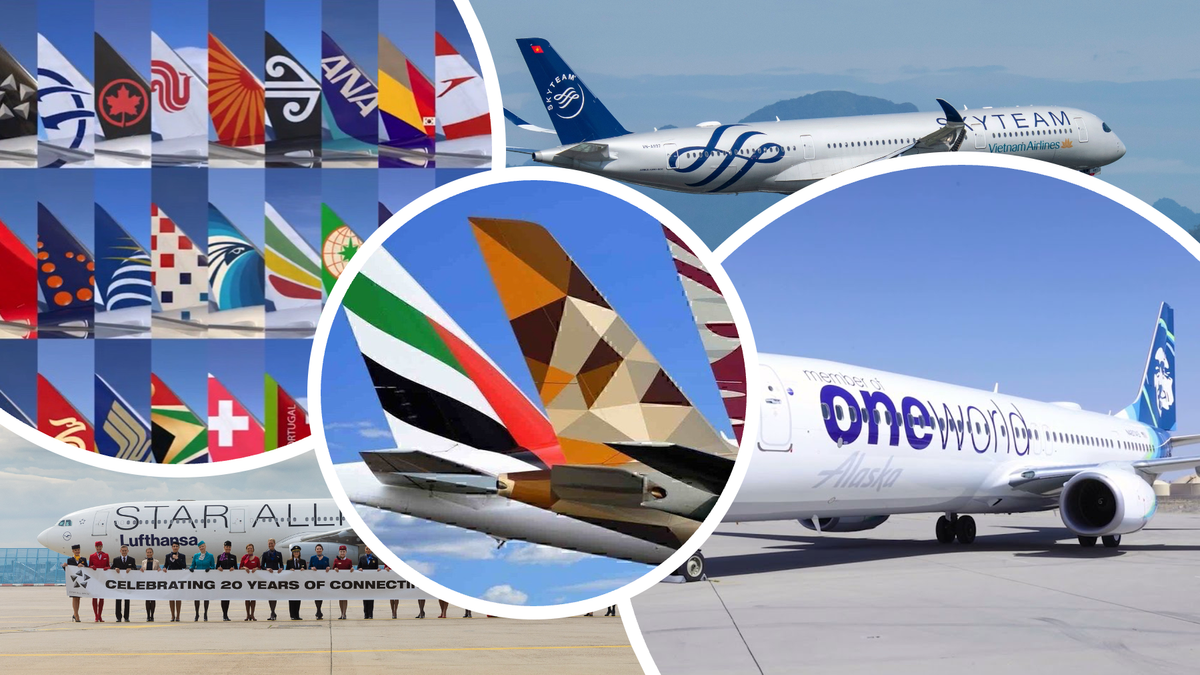
Deep Research Using AI
This epic, nearly 20,000-word beast of an article series was painstakingly conjured up with some Deep Research functionalities. While it may sound incredibly authoritative, well-informed, and even suspiciously insightful, remember—this content is intended for entertainment purposes only. Think of it as the informational equivalent of a late-night Wikipedia rabbit hole: fun, fascinating, occasionally eyebrow-raising, but definitely not something you should bet your house, job, or firstborn on.

As of April 2025, airlines have cranked the hype machine to full throttle, convincing travelers to worship at the altar of loyalty programs. But here’s the spicy truth: much of this status-chasing is a sucker’s game, offering far less value than the obsessive culture around it would have you believe.
In this irreverent deep-dive, we’ll skewer the obsession with airline elite status. We break down the major airline alliances (oneworld, SkyTeam, Star Alliance) and how they tempt you with perks. We’ll peek behind the gilded curtain of the Middle East “Big 3” (Emirates, Etihad, Qatar) to see how their loyalty programs play a different game. We’ll dish out updated April 2025 insights on what those fancy tiers actually get you – from baggage and boarding to upgrades and lounges – and call out specific examples (yes, we’re coming for you, Delta, American, United). Buckle up for a brutally honest pros and cons list for each case, a look at credit card shenanigans, spending thresholds, status matches, upgrade odds, and more. Along the way, you’ll find our ProTips (real talk for smart travelers) on getting maximum value without selling your soul (or wallet) to one airline.
Get ready for a wild ride at 35,000 feet – where we learn that blind loyalty might just be holding you back from smarter travel choices. Tray tables up; it’s time to take off the rose-tinted glasses and see airline elite status for what it really is.
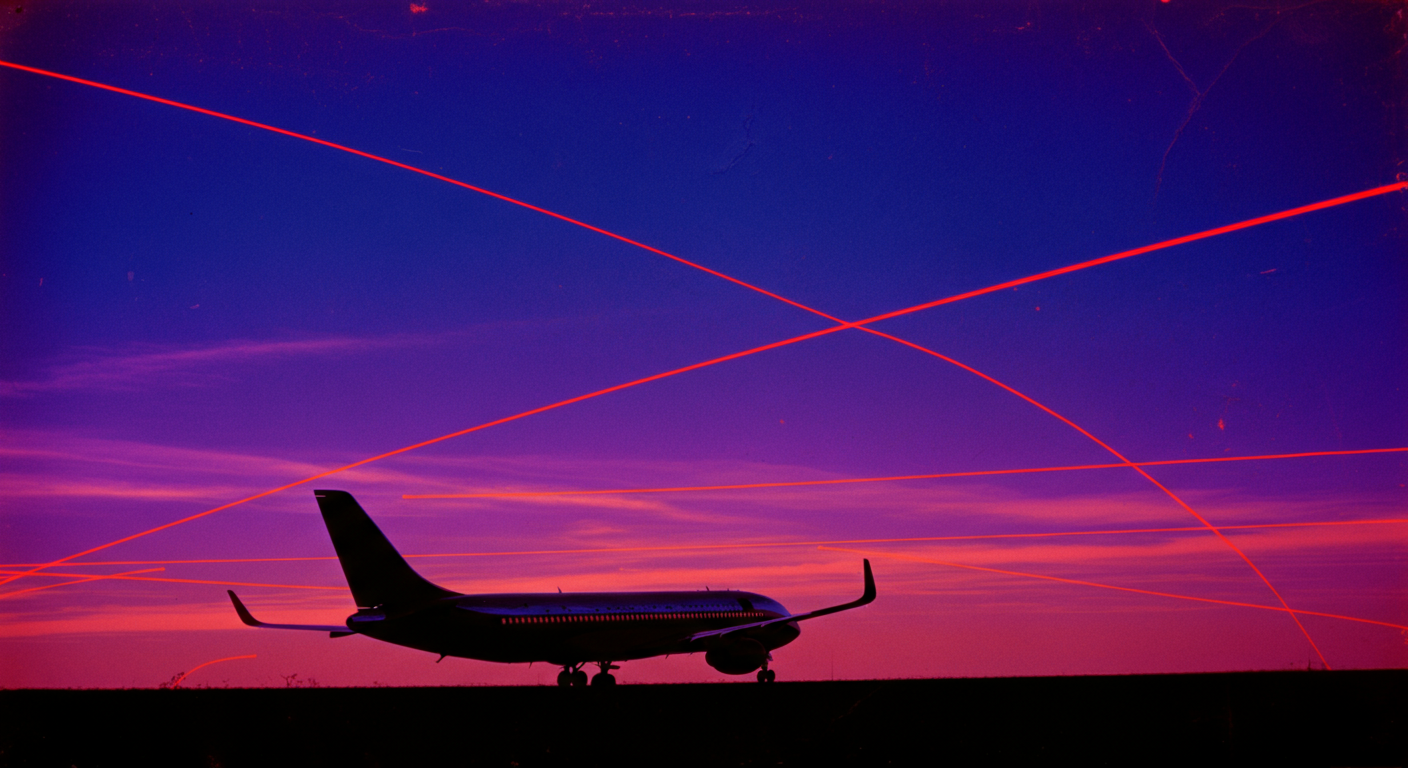
The Cult of Elite Status: Why Are We So Addicted?
Frequent flyer elite status wasn’t always a circus. Decades ago, it was simple: fly a lot, get treated a bit better. But airlines have cleverly transformed loyalty into a full-blown lifestyle obsession. Travelers now plan their lives around reaching arbitrary tier thresholds, all for the fleeting privilege of Group 1 boarding and maybe a half-decent seat. Airline marketing departments deserve an Oscar – they’ve convinced otherwise sane people to chase status like it’s the Holy Grail.
Let’s be real: much of the status chase is about ego and psychology. That shiny card and elite tag on your luggage are modern-day merit badges. They signal to others (and yourself) that you’re a Somebody in the skies. Airlines play into this vanity with names that sound like military ranks or precious metals – Gold, Platinum, 1K, Diamond, Executive Platinum (ooh, fancy). It’s status theater: you feel important when an agent says “welcome back, Mr. VIP,” or when you cut the line at security (only to find 50 other “priority” people already there).
Travelers often cite the “free” upgrades, lounge access, and waived fees as justification for the hundreds of hours and thousands of dollars spent chasing status. But if you step back and do the math, the equation often doesn’t add up. As we’ll explore, many “benefits” can be obtained cheaper (or easier) without devotion to one carrier. Still, the psychology runs deep: people fear missing out if they don’t have status. Airlines expertly exploit this FOMO – a phenomenon we’ll call Status Anxiety – to keep customers flying their airline at any cost, even when a competitor is cheaper or more convenient.
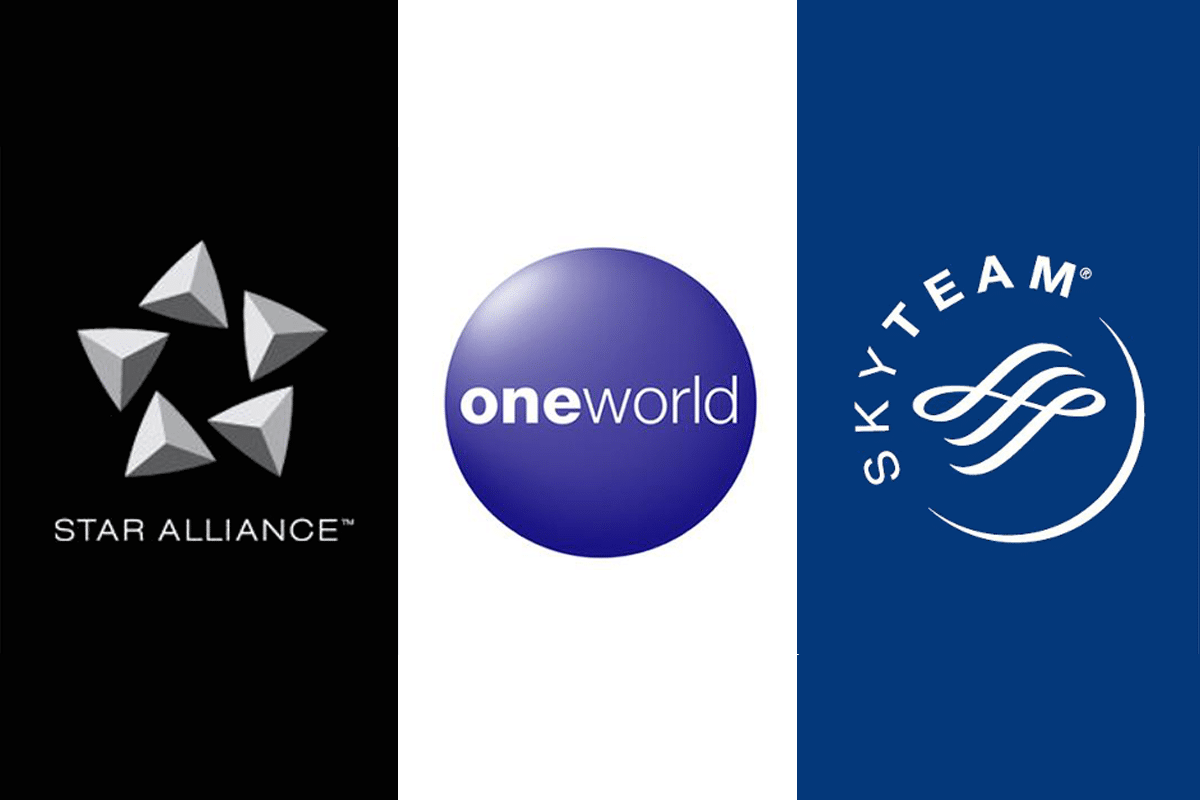
Airline Alliances: oneworld vs. SkyTeam vs. Star Alliance – Same Church, Different Pews
Before we shred the specific perks (or lack thereof), it’s key to understand the three global airline alliances. Think of oneworld, SkyTeam, and Star Alliance as the big three “churches” of airline loyalty. Joining one airline’s frequent flyer program often grants you status across the whole alliance (in theory, at least). Each alliance has its own fancy handshake: if you’re elite with one member airline, you’re granted a corresponding alliance status (which supposedly yields benefits on any partner airline in that alliance). It sounds great – global recognition of your “special” status! The reality is a bit murkier, but let’s break it down with a healthy dose of skepticism.
Star Alliance: “Gold” Status – The Fool’s Gold?
Star Alliance is the largest alliance (26 member airlines spanning United, Lufthansa, Air Canada, Singapore Airlines, ANA and more). They keep it simple with just two alliance-wide tiers: Star Alliance Silver and Star Alliance Gold.
Silver is basically the “thanks for playing” level – no real perks except maybe priority standby. Gold is the one everyone covets, as it’s supposed to unlock the goodies across all Star Alliance airlines.
- Lounge Access: Star Alliance Gold is your ticket to 1,000+ airport lounges when flying any member airline. In practice, this means if you’re Star Gold, you can pop into, say, the Lufthansa lounge even when flying economy on Lufthansa or United. That’s a solid perk – a quiet(ish) place to grab a coffee away from the gate lice. However, there’s a catch (there’s always a catch): U.S. airlines like United exclude their own elites from domestic lounge access. For example, a United Premier Gold (which is Star Alliance Gold) cannot access United Clubs on purely domestic tickets – an infamous carve-out in the rules. But if that same person had foreign Star Gold status (say via Air Canada Aeroplan), they could stroll into a United lounge on a domestic itinerary. It’s as absurd as it sounds. Essentially, United says “our Golds aren’t real Golds at home” – because selling lounge memberships and credit cards is more lucrative. So Star Alliance Gold is valuable for international travel lounge-hopping, but can be meaningless at your home hub thanks to protectionist fine print.
- Priority Services: Star Gold promises priority check-in, security, boarding, and baggage handling across all airline. And indeed, you typically get to use the business/first-class check-in lines and board early. This is nice, but again consider how many people have Star Gold – on a big flight, half the plane might have “priority” on their boarding pass. The priority security line might save you time… unless all the elites show up at once, then it’s just as slow. As for priority baggage, sure your bag might come off earlier with a big “Star Priority” tag, but there’s zero guarantee. Sometimes I think those tags are just for show.
- Extra Baggage: Most Star Alliance Gold members get an extra checked bag or heavier allowance by default. This can save a good $50-$100 per trip if you check bags often. But note: many co-branded airline credit cards offer a free checked bag without needing status.
(Spotting a trend here? We’ll hit credit cards later – spoiler, airlines make more money selling credit cards than seats these days.)
- Upgrades: Here’s where Star Alliance as an alliance doesn’t do much for you. Alliance-wide upgrades are rare as unicorns. Your Star Gold status won’t get you upgraded on partner airlines unless you use some upgrade certificate or miles, case by case. Upgrades remain largely within each airline’s own program. So the alliance doesn’t help when it comes to plopping your behind in business class – that depends on your airline’s policy and how many fellow elites are vying for the same seat.
- Notable Quirks: Star Alliance Gold is relatively easy to get via certain member programs (hello, Aegean Airlines, which historically had low requirements). This created a cottage industry of people earning Gold cheaply with a partner airline to exploit the lounge perk on more expensive carriers. Of course, alliances slowly plug such loopholes. Also, Star Alliance has no top tier beyond Gold – once you’re Gold, that’s it. That keeps things somewhat egalitarian, but it also means Star Gold covers a huge range from modest flyers to uber-road-warriors – a broad church, so to speak, all competing for the same perks.
oneworld Alliance: Emerald City and the Sapphire Blues
The oneworld alliance (American Airlines, British Airways, Cathay Pacific, Finnair, Iberia, Japan Airlines, Malaysia Airlines, Qantas, Qatar Airways, Royal Air Maroc, Royal Jordanian, SriLankan – plus partner Alaska Airlines) takes a tiered approach: oneworld Ruby, Sapphire, and Emerald. These correspond to the elite tiers of member programs (for instance, American AAdvantage Gold = oneworld Ruby; AAdvantage Platinum = oneworld Sapphire; AAdvantage Executive Platinum = oneworld Emerald). The idea is a Ruby from Japan Airlines equals a Ruby from Qantas in terms of privileges on any oneworld airline. Nice idea, but what do these tiers actually get you?
- Ruby (Lowest Tier): oneworld Ruby is the entry-level elite – basically recognition that you fly more than average, but not enough to pamper. Ruby gets you priority check-in and maybe priority waitlist/standby. No lounge access whatsoever. You might board a tad earlier than the masses (depending on the airline’s boarding groups). In short, Ruby is barely elite – it’s like being on the junior varsity team of loyalty. Useful perks: slim to none. It’s mostly a pat on the back.
- Sapphire (Mid Tier): This is the sweet spot for many because oneworld Sapphire includes lounge access – specifically business-class lounges across the alliance. If you’re Sapphire, you and a guest can enter any oneworld business lounge when flying a oneworld airline, even in economy. For example, an American Airlines Platinum (Sapphire) flying BA or Qantas can use those airlines’ business lounges. Sapphire also grants priority boarding, check-in, security and baggage handling, and an extra checked baggage allowance. Essentially, it maps to “mid-tier elite” perks. No first-class lounge access though (that’s Emerald-only). Still, Sapphire is arguably the most bang-for-buck status in oneworld – lounge access is the main differentiator over Ruby. Many travelers strive to at least get Sapphire if they fly oneworld carriers regularly, since it makes long trips much more pleasant with a lounge to relax in.
- Emerald (Top Tier): oneworld Emerald is the crown jewel. It gives you first-class lounge access when available, in addition to business lounge. Emeralds get to waltz into exclusive spaces like the Qantas First Lounge or American’s Flagship First Dining (if flying internationally) where the champagne flows and the crowd is thinner – theoretically. Emerald also usually comes with fast-track security and immigration in many airports, highest priority boarding, and even more baggage allowance. Essentially all the perks of Sapphire plus a few extras: first-class check-in counters and the fancy lounges. It’s the full VIP treatment on paper. However, in practice, even Emerald doesn’t guarantee miracles: you’re still limited by the operating airline’s policies. For instance, an American Emerald (Exec Plat) flying British Airways gets BA First Lounge access – nice – but flying American domestically, even an Emerald can’t get into an Admirals Club without buying membership or using a credit card, because AA (like United) doesn’t grant its own elites domestic lounge access unless on a qualifying tickets. So much for loyalty. There are also cases where oneworld Emeralds are downgraded in experience: e.g. Qatar Airways (a oneworld member) famously restricted Emerald and Sapphire members not flying business class to a separate lounge in Doha, keeping its posh Al Mourjan lounge exclusive to those with biz class tickets. In other words, “all animals are equal, but some are more equal than others” – your Emerald status is welcomed, but please stay in the other room. This kind of undercutting of alliance perks shows the limits of status across airlines.
So how do the alliances stack up on core benefits? Here’s a quick and dirty comparison:
| Perk / Status | oneworld Emerald (Top) | oneworld Sapphire (Mid) | oneworld Ruby (Entry) | Star Alliance Gold (Top) | Star Alliance Silver (Entry) | SkyTeam Elite Plus (Top) | SkyTeam Elite (Entry) |
|---|---|---|---|---|---|---|---|
| Lounge Access (international) | Yes – First & Business lounges (Emerald gets first-class lounges where offered) | Yes – Business lounge | No | Yes – Business class lounges (1 guest allowed) | No | Yes – SkyTeam lounges (with 3-hour limit) | No |
| Lounge Access (domestic home carrier) | Varies: e.g., AA Emerald no Admirals Club on domestic ticket (needs membership), BA Emerald yes in BA lounges | Same caveat: depends on airline (e.g. Alaska Sapphire gets Alaska Lounge access) | No | Varies: United’s own Gold can’t access United Club domestically, but foreign-program Gold can | No | New: As of 2025, SkyTeam doesallow Elite Plus domestic lounge access alliance-wide, but U.S. carriers may push their memberships | No |
| Priority boarding/check-in | Yes (first-class lanes) | Yes (business-class lanes) | Some (priority check-in) | Yes (priority lanes at check-in/security) | Limited (maybe standby only) | Yes (SkyPriority lanes) | Some (basic priority boarding) |
| Extra baggage allowance | Yes (typically +20kg or +1 extra bag) | Yes (+15kg or +1 bag) | No (maybe priority tags only) | Yes (+20kg or +1 bag) | No | Yes (typically +1 bag) | Possibly (some get +1 bag) |
| Bonus miles earning | Program-specific (e.g. AA Exec Plat 120% bonus) | Program-specific (e.g. AA Plat 80% bonus) | Program-specific (e.g. AA Gold 40%) | Program-specific (each airline sets own bonus) | – | Program-specific (e.g. Delta Silver 40%, Diamond 120%) | – |
| Upgrade priority (own airline) | Highest (top of upgrade lists) | High (ahead of lower tiers) | Low | High (top of list on own airline) | Lower | High (e.g. Delta Platinum/Diamond clear before lower tiers) | Low |
| Free domestic upgrades (own airline) | Yes (most U.S. programs offer space-available upgrades for mid/high tiers) | Yes (in U.S., e.g. AA Platinum) | Maybe (e.g. AA Gold gets upgrades after higher tiers) | Yes (United offers to all tiers, lower priority for Silver) | – | Yes (Delta offers to all Medallion tiers, lower priority for Silver) | – |
| Dedicated support | Yes (exclusive phone lines, staff) | Often (priority lines) | Not really | Yes (Premier hotline for Gold+) | No | Yes (Delta Platinum+ hotline) | No |
(Note: Benefits can vary slightly by airline within an alliance, but this table shows the typical alliance-wide perks.)
Looking at the table, you might think “Hey, being top-tier (Emerald/Gold/Elite Plus) seems worth it for the lounge access and priority!” Those are indeed the headline perks alliances advertise. But keep in mind how limited some of these can be in practice. Alliance-wide lounge access is great for international travel, but if most of your flying is domestic U.S., alliance status won’t save you from crappy airport food – you’d still need that airline’s club membership or a credit card that grants lounge entry. Priority lanes help, but when everyone is priority, no one is. Extra bags are nice, but a $95 credit card could do the same.
And remember: alliance status doesn’t automatically upgrade you. The real upgrades – the ones that put you in a better seat – come from the individual airlines and their unique programs. Alliances mostly offer soft perks (ground experience improvements) rather than the holy grail of a lie-flat seat.
SkyTeam: Elite Plus Déjà Vu
SkyTeam (Delta, Air France/KLM, Korean Air, Aeromexico, Virgin Atlantic (new in 2023), and others – 19 members total) takes a page from Star Alliance with two tiers: SkyTeam Elite and SkyTeam Elite Plus. Basically, “Elite” corresponds to a mid-tier status on a member airline (e.g. Delta Silver Medallion, Air France Silver), and Elite Plus is a higher tier (Delta Gold/Platinum/Diamond, Air France Gold/Platinum, etc).
- SkyTeam Elite (Lower Tier): This will get you priority check-in and boarding on SkyTeam flights, and an extra baggage allowance on international routes. But notably, no lounge access for plain Elite – just like Star Silver or oneworld Ruby, it’s a minimal tier.
- SkyTeam Elite Plus: This is the one that includes lounge access, equivalent to Star Alliance Gold or oneworld Sapphire/Emerald. Historically, SkyTeam had a big disadvantage: no lounge access on domestic itineraries for Elite Plus. For example, a Delta Platinum (SkyTeam Elite Plus) flying domestic Delta couldn’t use the Sky Club unless they bought a membership or had the right credit card. Meanwhile, a comparable oneworld Sapphire on American or Star Gold on United could use partner lounges internationally (though AA/UA had their own carve-outs domestically, as discussed). However, effective April 1, 2025, SkyTeam changed its policy – Elite Plus now gets lounge access even on domestic itineraries across all member. This is a big shift toward parity with the other alliances. Of course, they gave this and then immediately added restrictions: a 3-hour time limit before departure for lounge visits, and guests must be on the same flight no. In short, SkyTeam said “okay, you can come into lounges for your domestic flights now, but don’t dare show up five hours early and camp out, and no sneaking your buddy in unless they’re flying with you.” It’s a mixed bag update – helpful, but with a side of fine print.
- Aside from the lounge changes, Elite Plus also grants the usual priority boarding, baggage, and check-in. One perk somewhat unique to SkyTeam Elite Plus (and Star Gold) vs. oneworld Sapphire: guaranteed seats on full flights. If you’re SkyTeam Elite Plus and really need to get on a “sold out” flight, they’ll make space for you (often only if you’re buying a full-fare ticket). It’s rarely used by normal folks (since it may require paying full fare), but it exists as a promise to top elites.
- SkyTeam’s vibe: It’s often viewed as the least glitzy alliance (no offense, but someone has to be last). Their U.S. anchor, Delta, has been amazing at making loyalty lucrative – for themselves. But SkyTeam as a whole historically had fewer top-tier perks. For instance, until 2025 a Delta Diamond (SkyTeam Elite Plus) got no lounge access on domestic trips unless they also had the Amex Platinum card. That’s pretty stingy compared to oneworld/Star. Now that they’ve changed that, SkyTeam elites are closer in line with others. Still, SkyTeam’s network has fewer uber-premium carriers; you won’t find as many first-class lounges or over-the-top experiences. On the bright side, it can be a bit easier to attain Elite Plus via some SkyTeam programs (fewer people chasing it in certain regions). But at the end of the day, all three alliances offer a similar slate of perks – with slight differences in execution and loopholes.
Get ready for Part 2 (out of 5) in tomorrow's newsletter, where we dive into the U.S. Major Airlines: Status Showdown (and Shakedown). We’ll break down what you need to know about loyalty programs and how to navigate the perks—and the pitfalls. Stay tuned!
